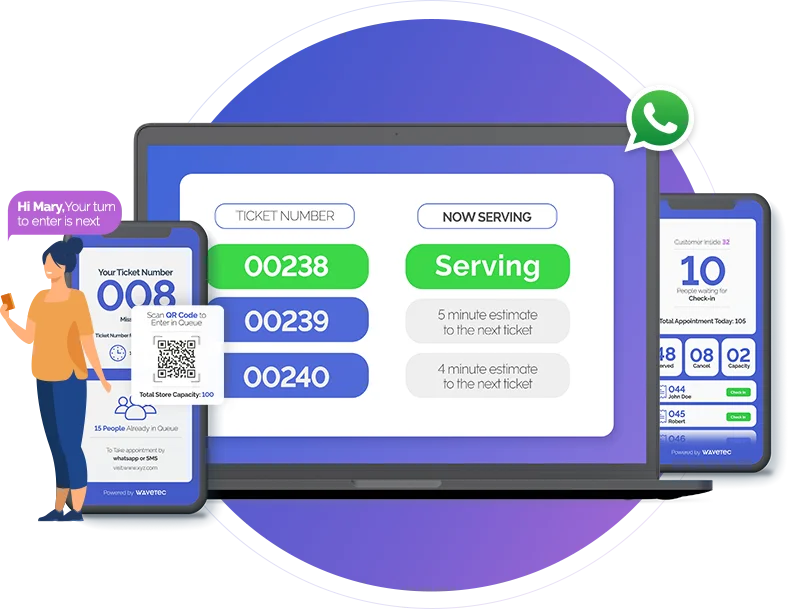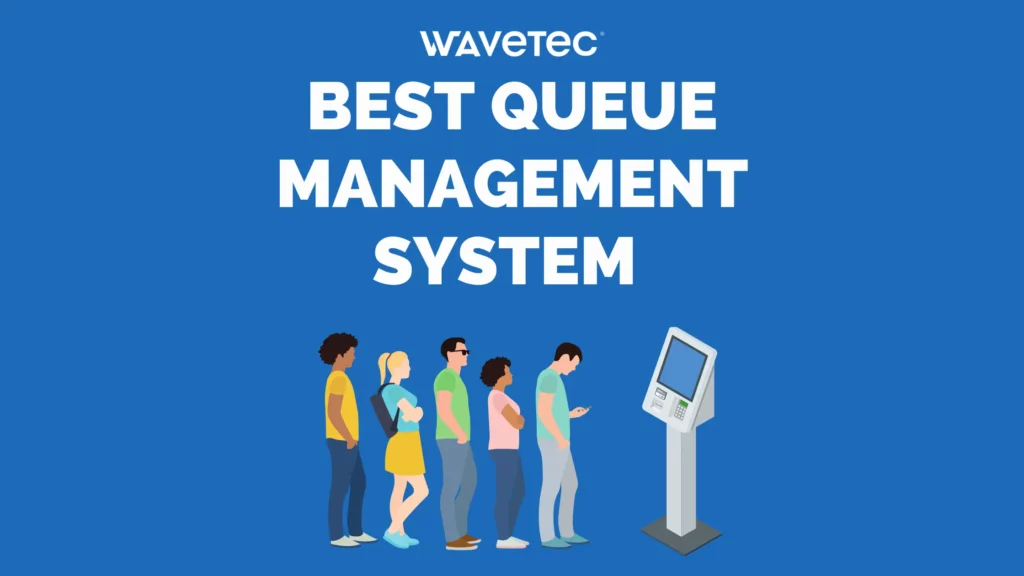Queue Management is the systematic process of overseeing and controlling queues to ensure smooth customer flow and minimize wait times. Efficient Queue Management holds vital importance in various service-oriented industries.
It directly impacts customer satisfaction, operational productivity, and overall service quality. This article aims to dive into Advanced Queue Management Techniques, shedding light on innovative strategies beyond conventional methods.
By examining cutting-edge approaches, businesses can enhance customer experiences, optimize resource allocation, and elevate operational efficiency.
Through this write-up, we will uncover how modern queue management solutions are revolutionizing customer service delivery across a diverse range of industries.
Analysis of Advanced Queue Management Techniques
When it comes to customer service, implementing advanced queue management strategies has become imperative for businesses striving to deliver exceptional customer experiences.
These innovative techniques go beyond conventional practices, revolutionizing how queues are handled.
Businesses can stay ahead in today’s competitive landscape by optimizing wait times, enhancing service efficiency, and prioritizing customer satisfaction. Hence, let’s look at these techniques in detail.
1. Multilevel Feedback Queues
Multilevel Feedback Queues is a clever system for managing tasks. It takes into account what customers think and is based on customer feedback. When a task gets praised, it moves up in priority for faster attention. If it gets less positive feedback, it moves down.
This helps the system work more effectively and keeps customers satisfied. So, it’s like having a brilliant assistant that learns from every task. It’s always striving to do better!
With Multilevel Feedback Queues, tasks are handled in a way that’s responsive to customers’ wants, ensuring things run smoothly and everyone is happy with the service provided.
2. Fair Queuing
Fair Queuing is an advanced technique that ensures everyone gets fair treatment in a system. It’s like making sure that nobody gets left behind.
How Fair Queuing Works
- Dividing Tasks Fairly: Imagine if people were waiting for a bus. Fair Queuing ensures that everyone gets their turn and nobody cuts in line.
- Assigning ‘Virtual Time’: Fair Queuing uses a clever trick called ‘virtual time’ to track who’s been waiting. This way, even if one task takes longer, others aren’t unfairly delayed.
- Balancing the Load: It’s like spreading the work evenly. Fair Queuing ensures that no task hogs all the resources, which keeps everything running smoothly.
Why Fair Queuing Matters
Fair Queuing is essential because it promotes fairness and equality. It ensures that everyone using the system gets their fair share of attention, which leads to better service overall.
3. Quality of Service (QoS) Queuing
Quality of Service (QoS) Queuing is a vital component of Advanced Queue Management Techniques, allowing businesses to prioritize tasks based on their importance. It’s like ensuring that the most crucial things get handled first so nothing critical falls through the cracks.
Tailoring Attention with Different Queues
- Categorizing Tasks: QoS Queuing tasks into different groups based on their importance. This means that urgent matters are addressed promptly.
- Ensuring Critical Tasks Get Priority: Imagine a hospital needing to send essential test results. QoS Queuing makes sure that these crucial tasks don’t get delayed.
- Managing Resources Wisely: It’s like ensuring the most skilled workers are assigned the most critical jobs. QoS Queuing allocates resources efficiently, optimizing overall performance.
Why QoS Queuing Matters
QoS Queuing is essential for industries where timely action is crucial. Whether in healthcare, emergencies, or any field with time-sensitive tasks, the most critical matters receive the attention they deserve, leading to enhanced service quality and customer satisfaction.
Queue Management in Networking

Queue Management in networking is like traffic control for data. It ensures data packets flow smoothly through a network, preventing congestion and delays. It improves network performance and responsiveness by prioritizing critical packets and managing resources efficiently.
This is crucial in maintaining a reliable and fast network, especially in high-demand environments. With effective Queue Management, networks can handle heavy loads and prioritize critical data, ensuring a seamless and efficient flow of information.
1. Traffic Shaping and Policing
Traffic Shaping and Policing are critical in implementing Advanced Queue Management Techniques, ensuring efficient data flow within a network. They act as gatekeepers, regulating data transmission and enhancing overall network performance.
- Prioritizing Data Flow: These techniques determine which data packets get preference in transit, aligning with business analytics to ensure crucial information is transmitted promptly.
- Preventing Congestion: By controlling the data transmission rate, Traffic Shaping and Policing help prevent network congestion, maintaining consistent performance even during peak usage.
- Enabling Virtual Queueing: Through advanced queuing strategies, these techniques facilitate a virtual queuing system, allowing for smoother data flow and reduced wait times.
Traffic Policing vs. Traffic Shaping
Traffic Policing
- Strict Enforcement: Traffic Policing takes a more rigid approach. It drops excess traffic that exceeds predefined limits, maintaining network integrity and preventing overload.
- Immediate Response: It immediately responds to non-compliant traffic, ensuring excessive data does not disrupt the network.
Traffic Shaping
- Smooth Data Flow: Traffic Shaping is more lenient, regulating traffic flow to smooth out bursts and maintain a consistent data rate.
- Buffering and Delay: It uses buffering techniques to temporarily hold excess traffic, releasing it at a controlled rate to prevent abrupt spikes in network usage.
Understanding the distinctions between Traffic Policing and Traffic Shaping empowers network administrators to select the most suitable approach for their specific requirements, ultimately optimizing network efficiency and performance.
2. Buffer Management
Buffer Management, a cornerstone of Advanced Queue Management Techniques, involves strategically allocating resources for smooth data flow.
- Optimizing Resources: By using techniques like people counting, Buffer Management determines the ideal size of data storage, ensuring efficient handling of incoming requests.
- Dynamic Allocation: It allocates buffer space based on demand, prioritizing critical data to prevent delays and congestion.
- Supporting Advanced Queuing: Buffer Management facilitates advanced queuing strategies by providing sufficient space for tasks and optimizing workflow.
Buffer Overflow Prevention Techniques
Buffer Management employs various strategies to prevent data loss and maintain system stability.
- Traffic Prioritization: It ensures critical data is processed first, minimizing the risk of overflow.
- Automatic Load Shedding: In case of congestion, less critical tasks are temporarily delayed or redirected to prevent buffer overflow.
- Real-time Monitoring: Continuous monitoring and adjusting buffer allocation dynamically adapt to changing demand, preventing overflow situations.
Implementing effective Buffer Management enhances queue efficiency and safeguards against potential disruptions, ensuring seamless data flow within a network.
Queue Management in Operating Systems

In operating systems, effective queue management is pivotal for seamless task execution. Whether it’s organizing processes or managing I/O operations, the efficiency of these queues directly impacts overall system performance.
Let’s look into two crucial aspects of queue management: Process Scheduling Queues and I/O Queue Management.
1. Process Scheduling Queues
Process scheduling queues are at the heart of an operating system, as they systematically organize task execution.
- Web and Cloud Scheduling: In today’s digital landscape, where web and cloud-based applications dominate, advanced queuing algorithms are essential. They ensure processes are executed efficiently, optimizing resource utilization in distributed computing environments.
- Advanced Queue Management Strategies: Modern operating systems employ sophisticated queue management strategies, such as Multilevel Feedback Queues and Round Robin Scheduling, to dynamically prioritize tasks. These techniques enhance responsiveness and resource allocation, which is crucial for multitasking environments.
2.I/O Queue Management
I/O Queue Management oversees data flow between the CPU and external devices.
- Optimizing Data Transfer: Advanced queuing techniques regulate data flow, preventing bottlenecks and ensuring efficient I/O operations. This is vital for maintaining system responsiveness, particularly in scenarios with high I/O demands.
- Enhanced Performance in Cloud Environments: In cloud computing, where numerous virtual machines share physical resources, effective I/O queue management is vital. It ensures equitable resource access, preventing resource disputes and guaranteeing consistent performance.
By understanding and implementing robust queue management strategies, operating systems can achieve optimal task execution, meeting the demands of modern computing environments.
Machine Learning and AI in Queue Management

Now, let’s explore the transformative impact of Machine Learning and AI in queue management as we dive into advanced queue management strategies. These technologies promise to revolutionize how queues are managed, ensuring smoother operations and improved customer experiences.
1. Predictive Queue Management
Predictive Queue Management utilizes the power of AI and Machine Learning to foresee future queue lengths. It’s like having a crystal ball for queues!
Analyzing past data and real-time factors like holidays or special events helps businesses prepare in advance. For instance, at places with self-service kiosks, it predicts when more customers might arrive, allowing staff to be ready. This means shorter waits and happier customers.
2. Anomaly Detection in Queues
Anomaly Detection in Queues is like having a super alert system. It uses AI to spot unusual patterns, like unexpected long lines. This helps businesses take quick action, like opening more counters or kiosks.
For instance, if there’s a sudden surge in the queue at a theme park’s area, the system swiftly identifies it and ensures additional staff is on hand. This prevents the queue from spiraling out of control.
Thanks to Machine Learning and AI integration, queue management is more intelligent and markedly more efficient.
Conclusion
Advanced Queue Management Techniques represent a significant leap in optimizing task execution and resource allocation. Methods like Multilevel Feedback Queues and Fair Queuing exemplify the adaptability and fairness achievable in modern systems.
Moreover, integrating Machine Learning and AI further increases the potential, transforming how queues are managed and enhancing overall system efficiency.
By embracing these strategies, businesses and networks elevate performance, ensure equity, and deliver a superior customer experience with modern solutions.
This technological advancement signifies a substantial step toward more effective and impartial queue management in today’s ever-evolving computing landscape.
BOOK A FREE DEMO






